This post tells about the time when WRC cars were first introduced and 1000 Lakes Rally became Rally Finland. First the route was tightened through new rules which introduced service parks. At the same time, stages started to be repeated again, on a larger scale than before. Subsequently the overall length was also limited by the rules. During this era, the number of service areas kept reducing and the average length of the stages increasing. All driving also happened now in the daylight.
Cover image by Jouni Laakso (c)
1996 – Introduction of service parks
In 1996, big changes were approaching the rally both from the inside and outside. No one knew it at the time of the event, but this would be the last 1000 Lakes Rally ever.
However, already well before the event new rules ordered servicing to be allowed only in designated service areas, called Service Parks. In 1996, there were nine of them, spread over the route.
Another major change was the return of stage repeats on a large scale. Before the rally, the route designer Raimo Jokela had even said it would be ideal to repeat every stage of the rally.
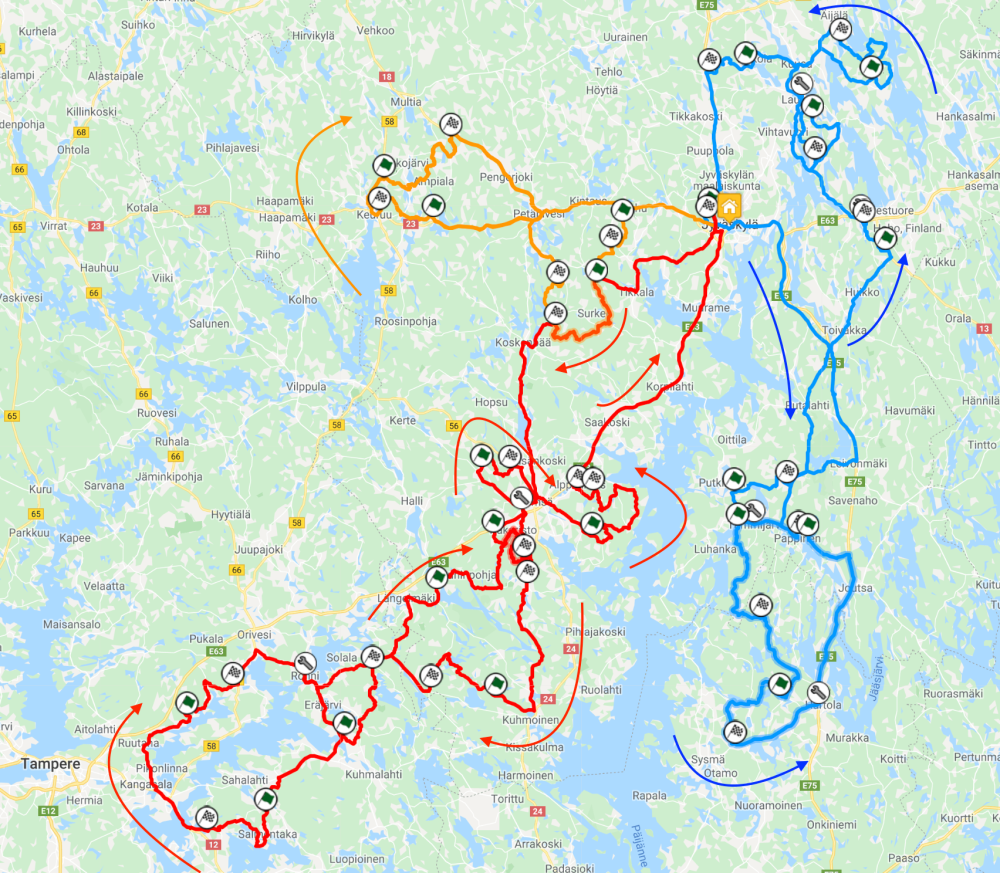
The biggest structural update was that the rally started now on the Friday evening with just one super special and ended on Monday, making Sunday also a full day of driving. During the three previous years, major competitors had retired early on Friday morning. According to Clerk of the Course Simo Lampinen in the Vauhdin Maailma magazine, by starting the actual competition on Saturday, it would be ensured that the most popular day for spectators would still include most big-name competitors. Meanwhile, people could watch the podium during their lunch breaks on Monday noon.
Saturday started now with Parkkola instead of Leustu. Next up was Rapsula returning in a new format. A part of it was repeated later during Ouninpohja. Rapsula also concluded with the Hassi road not driven since 1990. The route of the 1996 Rapsula would return in 2019 as Kakaristo.
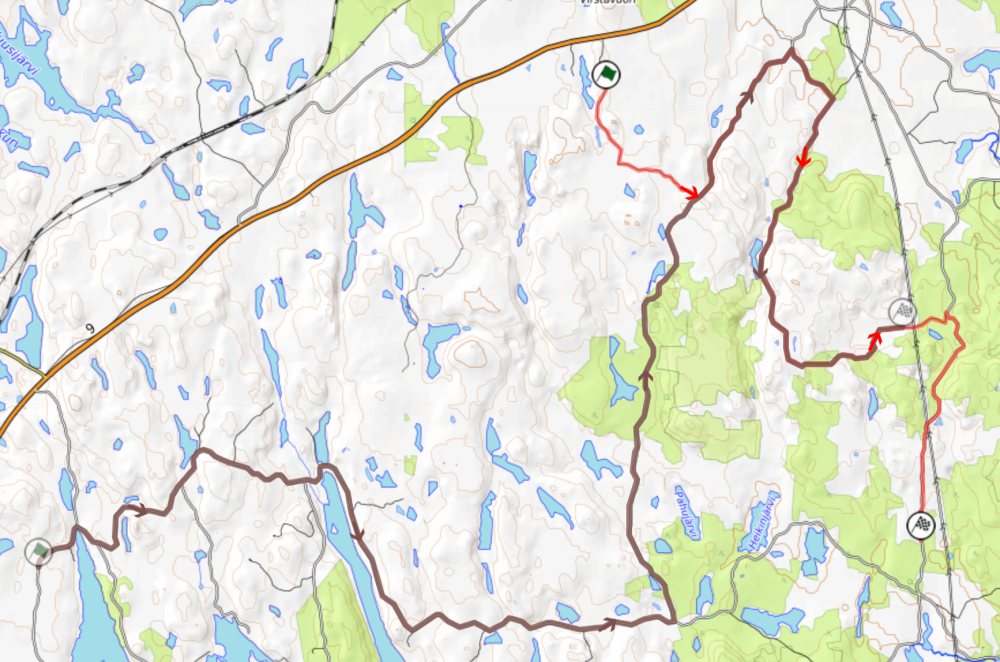
The Saturday leg was now considerably shorter than before. This meant end of the road for classic stages such as Koivulahti, Uskila and Savo. Consequently, the Sahalahti stage had now a new ending – to allow returning towards Jyväskylä earlier – on a wide road which is well shown on this 1998 video.
The 1996 rally didn’t include any completely new stages. Heräjärvi is a new name, but in fact it’s just a rebranding of the Kaipolanvuori stage, driven in its 1990 format. The day concluded again with the Himos twin-car super special.
It’s also worth mentioning that only a few top drivers did the event in 1995, which reversed many of the Saturday stages – including the three longest ones of the day – Ouninpohja, Vaheri and Päijälä. Thus these stages were essentially new to most drivers, whereas for example Mäkinen, Kankkunen, Kytölehto and Grönholm – the top four of the rally – must have had an advantage.
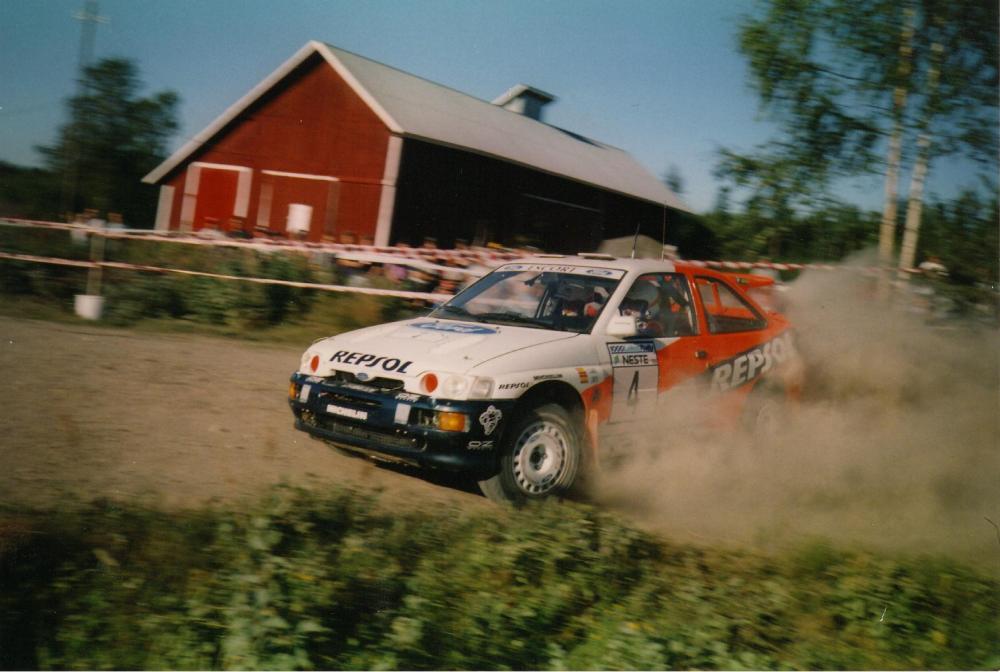
Sunday started with stages in South-West, in the Joutsa area. During the previous years, these stages were situated at the end of the event, but now half of the rally would still be ahead.
“I don’t think I have ever done 100% speed here. Now you have to approach the leg in a completely different way right from the start”
– Marcus Grönholm
The stages Lempää, Mynnilä and Vartiamäki were set in a loop driven twice consecutively – a then-futuristic concept which is business as usual today. Between the loops there was a service in Tammijärvi.
Lempää and Mynnilä were shortened from their previous versions, probably to make the tight schedule work. At 5:08 on the following video you can see Tommi Mäkinen on the tight downhill junction at the end of Mynnilä and in the next shot Juha Kankkunen tackling the narrow houseyard on the Vartiamäki stage.
Sunday proceeded with a short North-Eastern loop, without returning to Jyväskylä in the middle. Service areas were set in Lievestuore and Laukaa.
The stage quartet of Ruuhimäki, Laukaa, Lankamaa and Valkola would get lots of mileage together in the following ten years. For this occasion, Valkola was driven in reversed direction, for the first time from East to West with the small road section.
The final stage of the day was Laajavuori, which hadn’t been driven in a few years, and not in the classic direction since 1989. Together with Himos and Harju this made up three super specials for the rally, although Harju was cancelled because of a tragic accident taking the life of a spectator. However, that is still the last time the Finnish WRC event has had to cancel a stage.
As we can see, both of the long driving days ended with a super special earlier in the evening. This meant that there was now absolutely no driving in the dark, marking the end of night stages in the history of the event.
The short Monday stages were the same that the rally opened with the year before, West of Jyväskylä. The second run of Parkkola was appended with Sahloinen, making up the longest stage of the rally at 33 km. There were two days between the two runs of Parkkola so the roads were even repaired in between, but still the small roads at the end caused numerous punctures for the Group N cars.
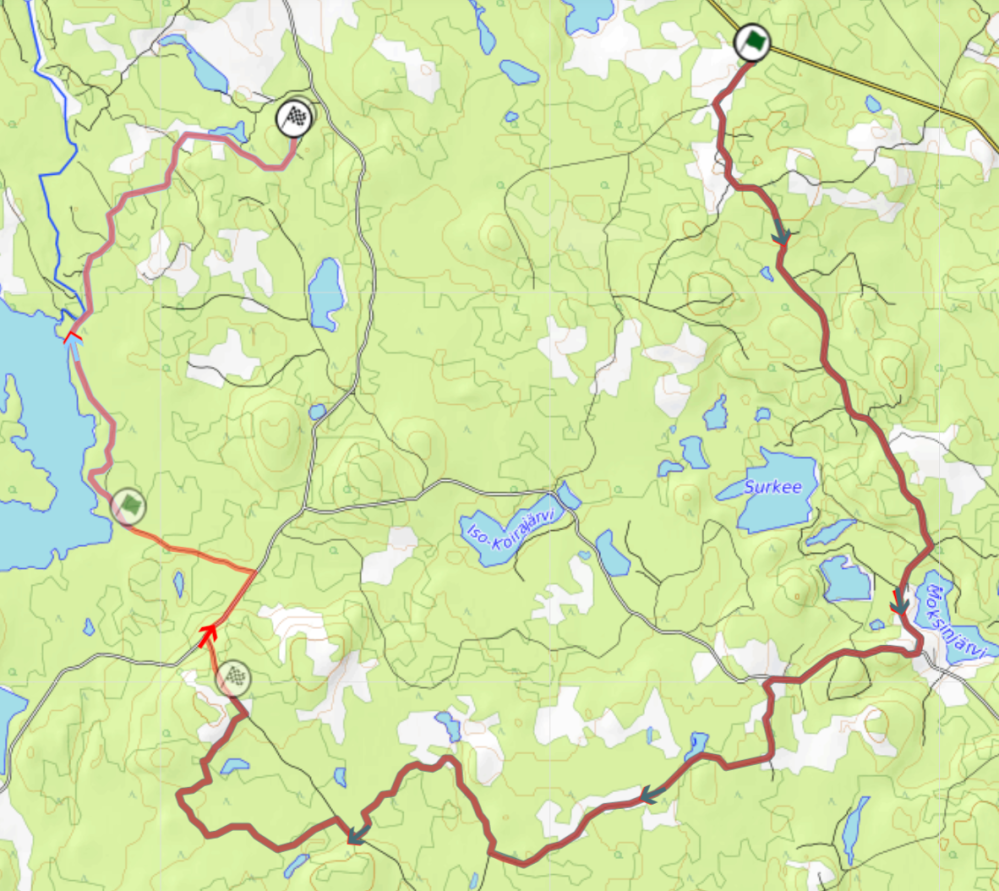
“Parkkola is not a stage where you can give an excellent performance every time”
– Tommi Mäkinen
Another quick-repeat loop of two stages concluded the rally with an in-between service in Petäjävesi. Keuruu and Jukojärvi were again new to most drivers, although they had been driven in 1995.
The rally was now considerably shorter than before, at 476 km of competitive distance. A new average speed record of 117 km/h was made, with the competition being fierce until the very end.
Soon after the 1996 event things started boiling. The organization behind 1000 Lakes Rally was in a state of turmoil. Subsequently the Finnish WRC event became arranged by AKK (the Finnish ASN). However, they weren’t allowed to use the old name anymore.
1997-1999 – One whole and two half days of rallying
From 1997 onwards the rally became known as Rally Finland. At the same time new regulations brought the maximum length of a rally down to 400 km, emphasizing the difference between “long” 1000 Lakes Rallies and “short” Rally Finlands. During these three years, the rally was again essentially two days long, from Friday afternoon to Sunday afternoon.
The 1997 total stage count was at 22, about half of what it was just seven years before, but still about the same as today. There were six different service locations.
Friday had only four stages, but together they made up 70 kilometres. The service location and the forest stages were familiar from the 1996 Monday.
The first stage was the longest – Parkkola, driven in the same 33 km format as the year before. The stage ended again with the roads of the Sahloinen stage, which wouldn’t be used ever again. This video at 4:06 shows a fast section which was traditionally at the beginning of Sahloinen.
“I remember when [Kankkunen] and [Vatanen] drove for the win [on the Sahloinen stage]. The road was filled with birch branches, that much they had cut in the corners.”
– Sebastian Lindholm
A new super special concluded Friday in the city of Jyväskylä with the title Hippos, including driving on the paved streets of an industrial area and sliding on a gravel parking lot. However, this stage is best remembered for some top drivers deliberately slowing down before the finish line in order to get a better road position for Saturday. The stage can be seen briefly here at 7:51
Saturday and Sunday were quite much the same as 1996, with just a lot of stages dropped, especially from Sunday, to make the route shorter. In addition, Leustu got back its usual position as the Saturday route opener with Parkkola being driven only once on Friday.
“You couldn’t have a better awakening in the morning than [Leustu]”
– Harri Rovanperä
On Sunday, Hauhanpohja was reversed and driven twice instead of Mynnilä. Meanwhile, Vartiamäki had again a 1992 style detour onto the Josemora rallycross track.
In addition to three pairs of stages on Sunday, no other full stages were repeated in the rally. Thus the percentage of single-run stages was now almost twice as high as the year before.
Not much information is archived from the shakedown stages of this era. This video from 1998 can be recognized as Humalamäki in reversed direction. Apparently a year later, both Humalamäki and Kuohu were both used as shakedown stages.
The 1998 Friday leg packed in now nine stages. It was still only 20 km longer than the four-stage loop the year before, and started only an hour earlier.
For the first time in a few years a completely new forest stage appeared on the itinerary in the form of Mökkiperä. The stage became famous for its heavy jumps at the beginning, seen on this video from 0:10 onwards.
After this the route resembled 1995 by completing a half-circle through North to East. The afternoon service was held in Laukaa. In the evening, the route returned to Jyväskylä for the Harju super special, for its last outing before the 2014 comeback.
Finally, two more forest stages were tackled West of Jyväskylä. Kuohu had opened the rally in a shortened format to allow the cars proceed Northwards, but this evening run used the traditional route. Meanwhile, Parkkola ran now on its 1988 route, possibly in order to lead the cars back towards Jyväskylä. Then the evening concluded with the Hippos super special.
On Saturday, Päijälä was replaced by Juupajoki, which now had a new route. The stage ended like in 1986, but before that, all of the 1990 Haukilahti stage was driven in reverse direction, with some new roads in between.
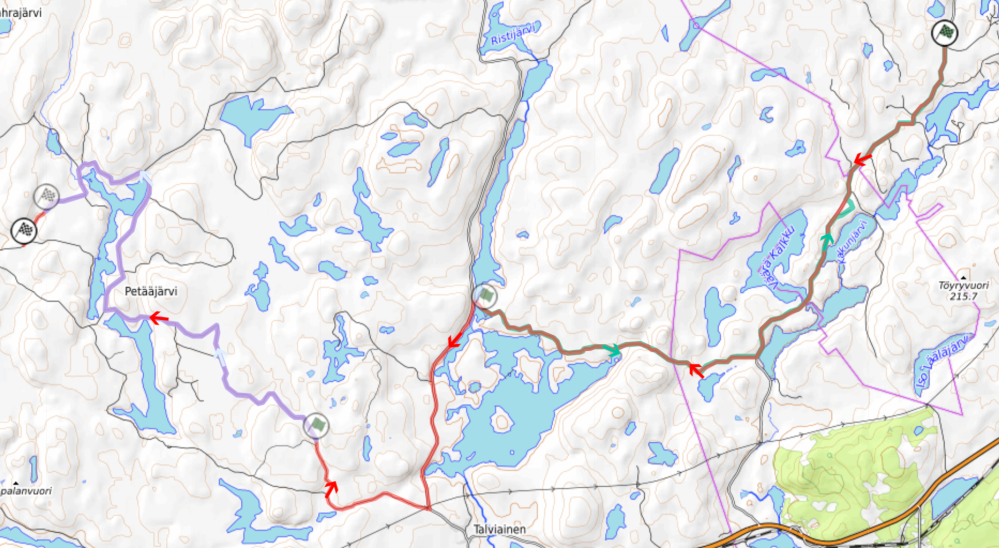
The stage passed the narrow Riukusalmi bridge. It can be seen on this video at 11:34
Ouninpohja was now lengthened by 2 km, ending on the Hassi road. This update completed the modern version of the stage. Meanwhile, the Rönni service park was moved to the center of Orivesi.
Surkee made a return after two years of absence in a shortened version, but wouldn’t feature again in a decade. The last 15 km of the stage was shared with Parkkola from the day before, just like in 1988. The Himos super special was now dropped, being replaced with a second run of Hippos instead. These were the only stage repeats of Saturday, since Rapsula was dropped from the route.
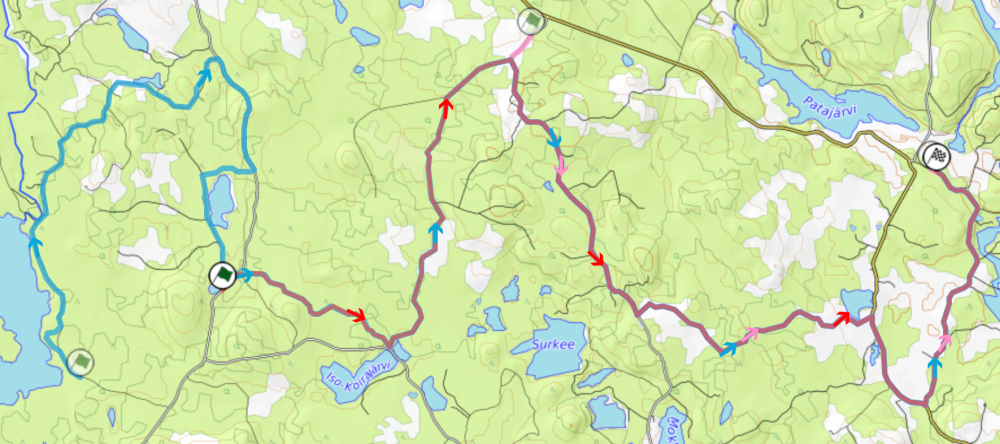
The Sunday route started now with a reversed Ruuhimäki. Vartiamäki was dropped, but the service was on the nearby Josemora circuit. The Ylemmäinen stage featured for the first time in six years on its own stage instead of being a part of Mynnilä. However, it would be the last time the stage was used in the rally so far.
Although the new WRC cars progressed, the average speed of the whole rally was still quite close to that of 1996 with the Group A cars. However, the rainy weather must have held the drivers back a bit.
The 1999 rally started with yet another version of Parkkola, now very fast, much like in 1990. Tiilimaa was another new stage for the Friday leg, although it wouldn’t feature in the rally ever again. It can be seen on this video at 4:43.
The afternoon service was now moved to the airport of Tikkakoski. Harju and the second loop West of Jyväskylä were omitted. Thus the day concluded directly with Hippos.
The Saturday route remained practically unchanged, but a repeat of Vaheri now replaced Surkee. In addition, the Jämsä service was moved to Himos. At the end of the day, there were the consecutive second and third repeats of the Hippos stage.
On the Sunday loop, Ylemmäinen was now gone, being replaced by a new stage, Tammimäki. However, it was just a combination of parts of Vartiamäki, now without the infamous houseyard with the stairs almost on the road.
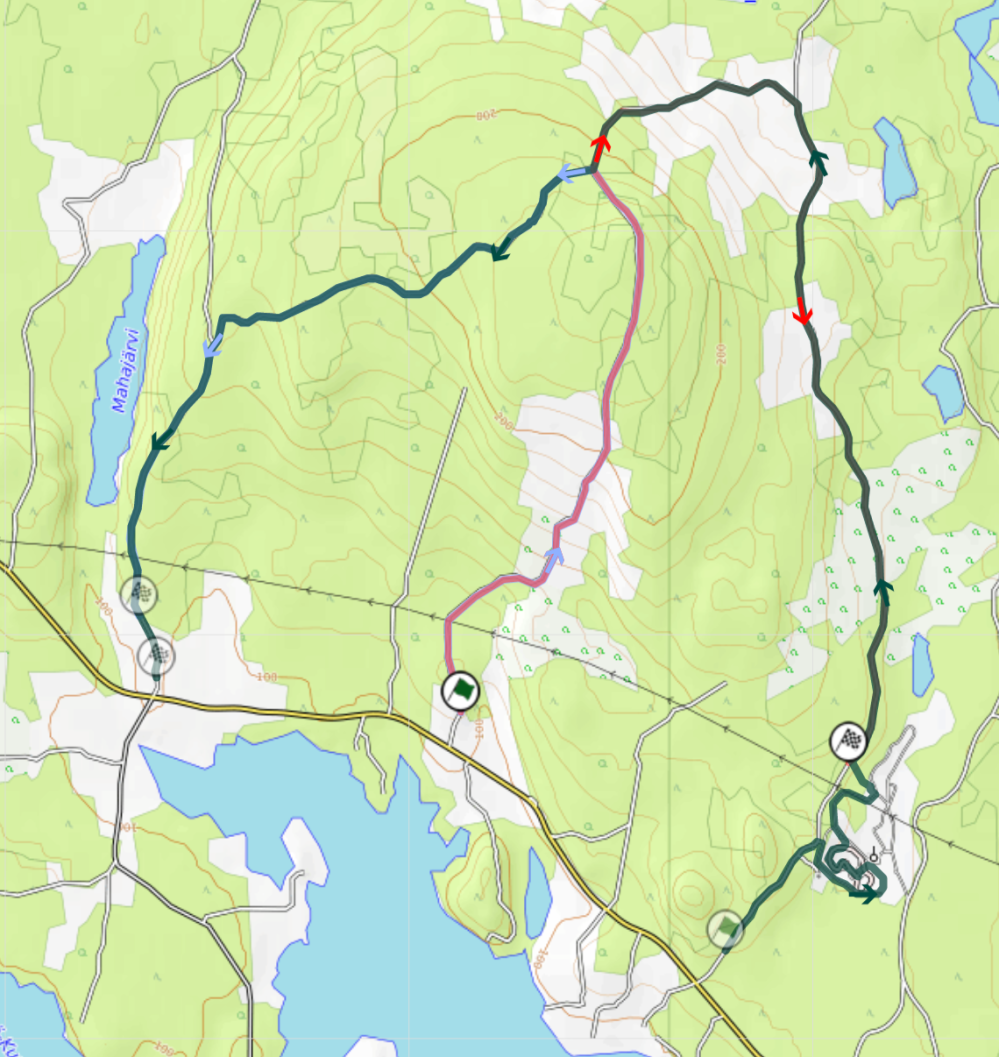
The rally ended with Ruuhimäki, which was a then-called TV Stage, much similar to today’s power stages. It was televised live with bonus points awarded. Cars started in reversed order and retired cars were allowed to re-start. This was also the first time that live footage was shown from a moving rally car onboard camera.
The 1999 route provided a new average speed record of 119 km/h. Also, the opening stage of Parkkola gave a new average speed record of 135 km/h. It’s remarkable that all forest stages were driven at 117 km/h or faster, something that was almost of a maximum ten years earlier. However, in addition to Parkkola, no other stage exceeded 127 km/h in average speed.
2000-2001 – Less services, more liaisons
At this time there was talk about the city of Tampere wanting to arrange the Finnish WRC event. In the end Jyväskylä held its ground, although they never managed to build a rally track into Laajavuori, like planned.
The route of Rally Finland 2000 became more compact through reduction of the locations of remote services. Thus, there were only two service areas in the rally, both at airports – one at Tikkakoski on Friday, and another in Halli on Saturday. No service park was held at all near the center of Jyväskylä, although the headquarters of the rally was moved from Laajavuori to Paviljonki.
It’s also worth mentioning that in 2000 all WRC rallies were ordered to be driven on the weekends. However, this regulation didn’t affect Rally Finland, as it had been arranged already that way for decades.
The rally started now already in the Friday morning for the first time since 1995. The day included 128 competitive kilometres but no stage repeats. The leg was split into three loops, first West, then North-West and finally East. Parkkola had yet again a new version, now reversing the route from the 1990-1993 Surkee stages.
The North-East loop took the rally towards Saarijärvi for the first time since 1980. Muittari was a stage driven that year, but this new version used only parts of that route, and even that in reversed direction.

The fast nature of Muittari can be seen here at 5:22, although the newly added small road loop is also shown.
Konttimäki was a new stage, while Palsankylä was driven decades ago partly as Palsa. However, Muittari and Konttimäki managed to produce overwhelming average speeds of 133 and 138 km/h, respectively. The latter is actually the fastest stage ever driven in the Finnish WRC event. Understandably these two stages wouldn’t ever return onto the route again. Conversely, Palsankylä would become a staple of the rally for the following years.
A new super special of Killeri was introduced to replace Hippos, driven at the end of Friday and Saturday. It was a twin-car stage on an oval trotting track, with no chicanes, just an artificial jump. The cars started simultaneously at the opposing straights. This oval track became very fast for a super special – the average speeds were as as high as 118 km/h. This brutal super special can be seen here at 32:42
Jarmo Mahonen even said subsequently that the stage was “stupid for the people who follow rallying actively”. However, in his opinion, the cars seemed too slow on the stage!
The Saturday leg was now tightened in order to use only one service park. Thus the leg was shorter, dropping the stages Sahalahti and Siitama for good.
Two classic stages returned for this 50th anniversary rally. Päijälä made a comeback onto the Saturday loop, now without the small roads added in 1987, but to the other direction than in the early 80’s. Meanwhile, Ehikki was updated to begin on the Palvia road last used in 1993, but in reversed direction. Subsequently, parts of the 1994 and 1995 routes were used.

The Joutsa area stages were now omitted altogether. Instead, Sunday was driven also in the South-West, consisting of five stages, four of them repeats from Saturday. This also meant the first ever full repeat of the modern Ouninpohja route.
The only non-repeated stage of Sunday was Moksi. It had nothing in common with the 1986 or 1991 versions. Instead, it was made up of the ending of the 1992-1995 Parkkola, now just driven to the other direction.
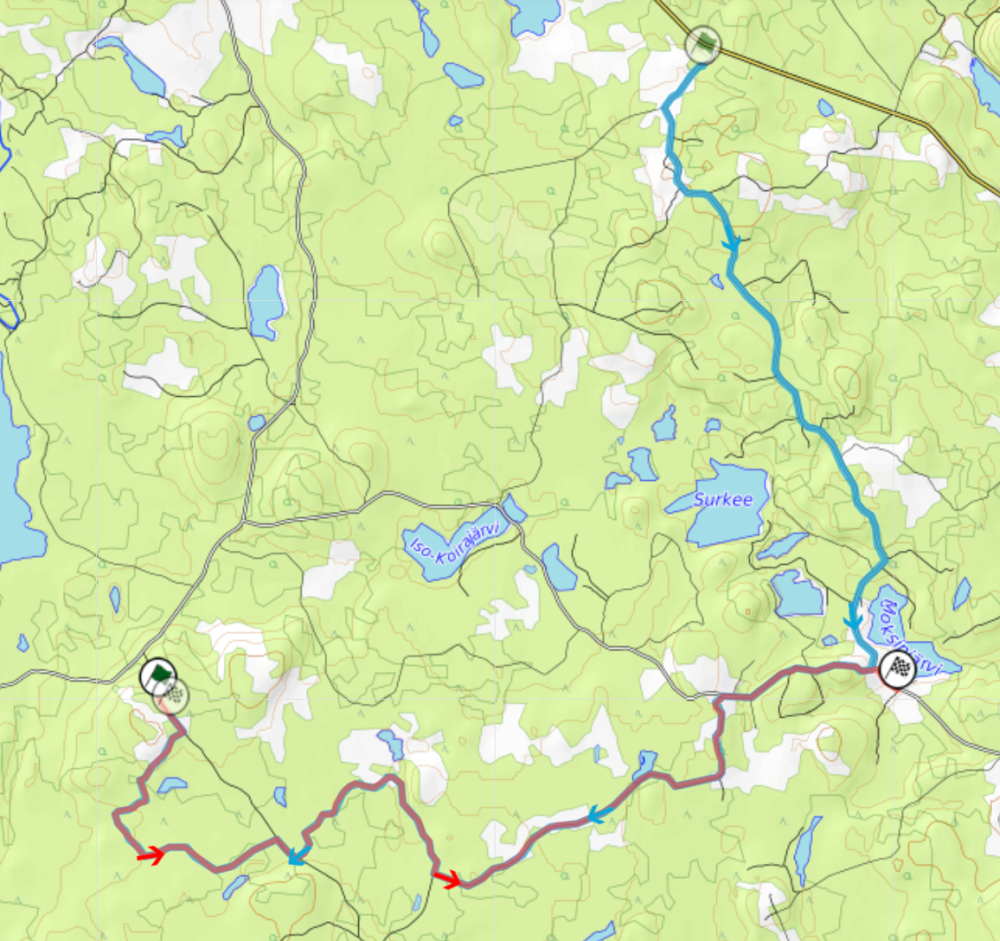
This time the rally ended with Vaheri. Its route was shortened slightly from the end, meaning that the finish of the final stage was practically in the middle of nowhere!
For the first time since 1986 the Ruuhimäki stage was absent from the rally. However, it was now playing the important role of the shakedown stage. Unlike the next decade shakedown usage, it was driven in its full 6 km length.
Because Killeri was so fast, the slowest stage of the rally was Moksi, at 110 km/h. Thus all stages of the rally were run at over 110 km/h, making it the least slow edition of the rally ever.
Perhaps thanks to the two very fast stages at the beginning of the rally and the lack of any slow stages, the rally reached a new average speed record of 121 km/h. The following 14 years would have the average speed revolving around similar numbers of 121-122 km/h dropping below 120 km/h only occasionally. It’s good to remember that only ten years before it was exceptional to exceed 120 km/h average speed on a stage.
In 2001 the biggest change was the introduction of the Paviljonki service park near the center of Jyväskylä. However, Saturday and Sunday were still serviced from Halli.
Now the first and third loops of Friday were both driven in the East. This video shows Colin McRae negotiating through the Valkola stage, as well as the beginning of Lankamaa.
Only the middle loop of Friday went Westwards. Palsankylä received much new kilometres, partly from a stage called Kelloperä, driven in the Historic 1000 Lakes Rally.
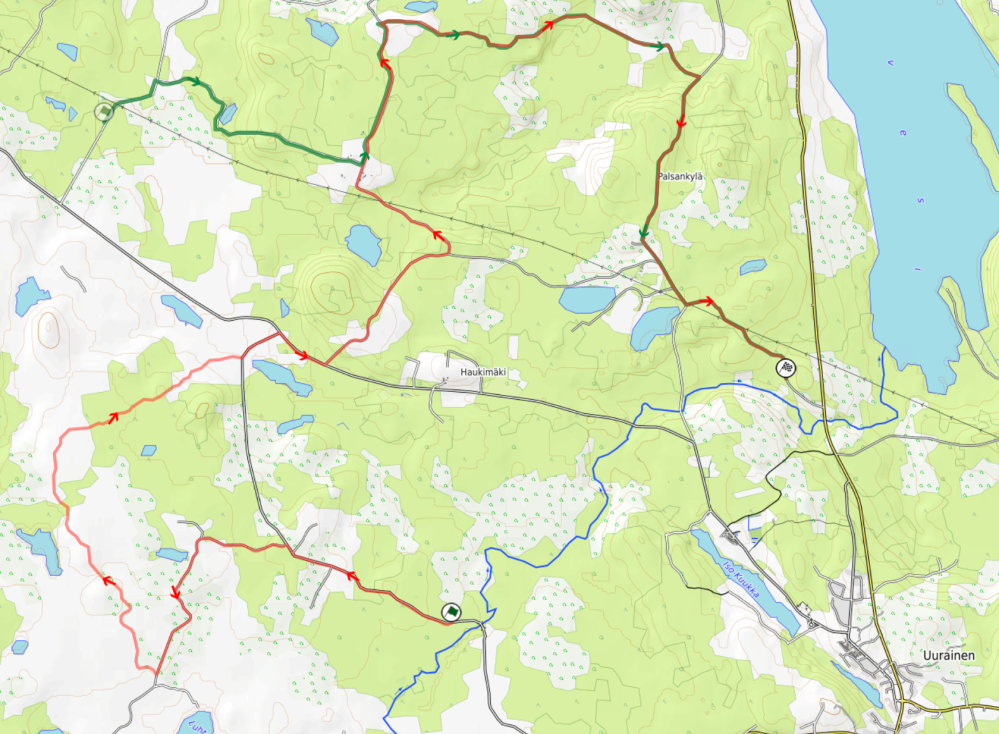
Killeri was driven at the end of Friday and Saturday. The stage was now crafted into a more traditional twin-track super special with a tunnel-and-bridge track change and more chicanes built on the way. It would stay like that for all its lifespan. This way its average speed resembled more of a traditional super special than the super fast oval track.
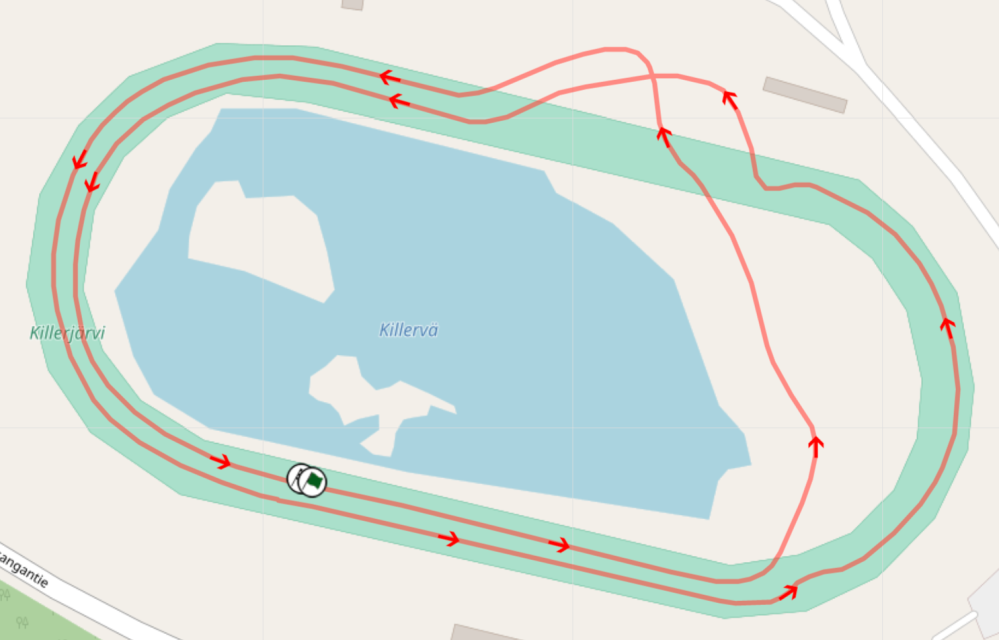
Saturday was largely the same as before. Talviainen is a new name, but it’s the exact same stage as Juupajoki the year before, just with the name changed per request of some locals.
Parkkola was also now moved from Friday to Saturday and inserted between Ehikki and Leustu. It was slightly shortened and reversed, in order to enable continuing Southwards. Now it was resembling the Surkee stages from the 90’s. However, this makes it six different versions of Parkkola in the same amount of years!
However, the most remarkable addition to the route came on Sunday morning in the form of Moksi-Leustu, a monster of a stage at 41 km of length. It was the longest stage in the history of the rally since Kokkosenlahti in 1973. However, Moksi-Leustu’s route offered little new to the drivers. As the name suggests, the beginning was the same as Moksi and the ending same as the latter half of Leustu the year before. It was bridged by the same roads used on the 1987 Leustu and 1991 Moksi stages.
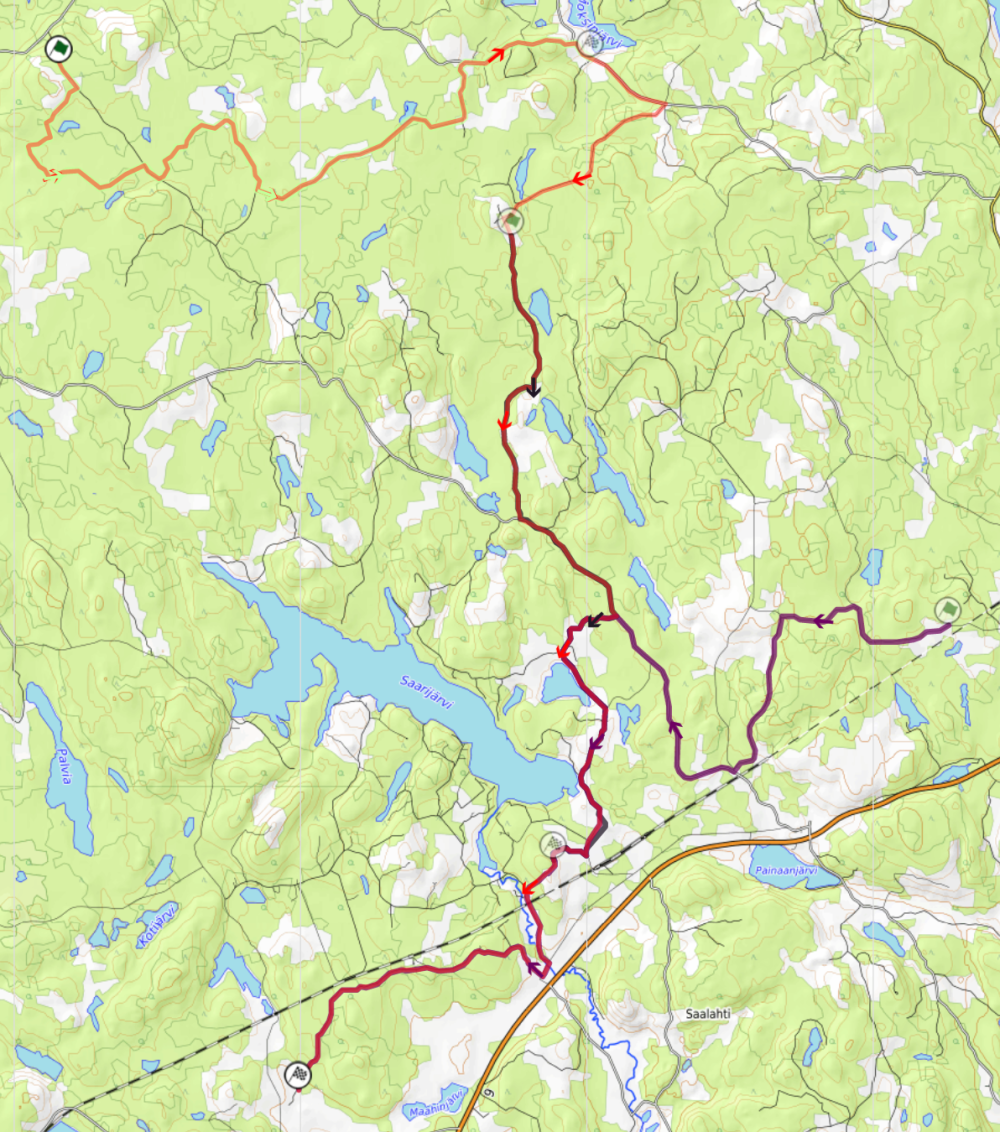
Various parts of Moksi-Leustu can be seen here from 3:02 onwards
The long stages didn’t end there, as Sunday was able to pack 96 stage kilometres into just three stages. However, the rally-concluding second run of Ouninpohja was shorter than on Saturday. It ended shortly after the Kakaristo junction, almost like in 2017. A direct TV broadcast of the rally-ending Ouninpohja can be seen at the end of the video above.
In 2001 the average stage length reached its peak of 19.35 km. This can be addressed to the long stages, but also the lack of short ones – Valkola was the only forest stage with under 10 km of length.
It’s also remarkable that in 2001 only nine stages were ran only once and six stages repeated twice. This means that for the first time in the history of the rally, more of the stages were repeated than single-ran. Only seven years earlier no stages at all were repeated at all.
From 1997 to 1999 the competitive length of the rally had revolved around 380 km with 790-880 km of road sections. However, in 2000 and 2001 the special stages totalled in at slightly over 400 km, whereas the road sections were suddenly 1270 km long. The latter must be due to the reduced amount of service areas. However, there wouldn’t be more of them in the future.
Yearly Data
| Year | Stages | Competitive length | Average stage length | Winner Average Speed | Fastest stage | Longest stage | ||
| 1996 | 28 | 476.41 km | 17.01 km | 117.00 km\h | Lempää | 125.80 km\h | Parkkola | 33.43 km |
| 1997 | 22 | 381.55 km | 17.34 km | 116.62 km\h | Keuruu | 127.45 km\h | Parkkola | 33.43 km |
| 1998 | 24 | 384.10 km | 16.00 km | 117.02 km\h | Västilä | 124.65 km\h | Ouninpohja | 34.55 km |
| 1999 | 23 | 377.26 km | 16.40 km | 119.82 km\h | Parkkola | 135.14 km\h | Ouninpohja | 34.21 km |
| 2000 | 23 | 410.18 km | 17.83 km | 121.46 km\h | Konttimäki | 138.21 km\h | Ouninpohja | 34.21 km |
| 2001 | 21 | 406.38 km | 19.35 km | 119.99 km\h | Ouninpohja | 128.94 km\h | Moksi-Leustu | 40.84 km |
Highest average stage lengths in Finnish WRC events:
| Year | Avg stage length | Stages | Competitive Length | |
| 1. | 2001 | 19.35 km | 21 | 406.38 km |
| 2. | 2002 | 18.26 km | 22 | 401.68 km |
| 3. | 2000 | 17.83 km | 23 | 410.18 km |
| 4. | 2003 | 17.79 km | 23 | 409.18 km |
| 5. | 2004 | 17.40 km | 22 | 382.71 km |
| 6. | 1997 | 17.34 km | 22 | 381.55 km |
| 7. | 1996 | 17.01 km | 28 | 476.41 km |
| 8. | 2005 | 16.93 km | 21 | 355.59 km |
| 9. | 2012 | 16.86 km | 18 | 303.52 km |
| 10. | 2006 | 16.74 km | 21 | 351.61 km |
| 11. | 1995 | 16.55 km | 32 | 529.54 km |
| 12. | 1999 | 16.40 km | 23 | 377.26 km |
| 13. | 2010 | 16.32 km | 19 | 310.05 km |
| 14. | 1998 | 16.00 km | 24 | 384.10 km |
| 15. | 2015 | 16.00 km | 20 | 320.00 km |
Stages run every year 1996-2001:
- Parkkola (six different versions in six years!)
- Vaheri
- Västilä
- Ouninpohja
- Ruuhimäki (as a shakedown in 2000 and 2001)
UPDATE 11.3.2021: Added Simo Lampinen reference to moving the rally to start one day later
UPDATE 21.4.2021: Added note about the end of night stages.
<< Rally Finland Route History III: 1988-1995
<< Rally Finland Route History II:1982-1987
<< Rally Finland Route History I: 1973-1981
3 thoughts on “Rally Finland Route History IV: 1996-2001”